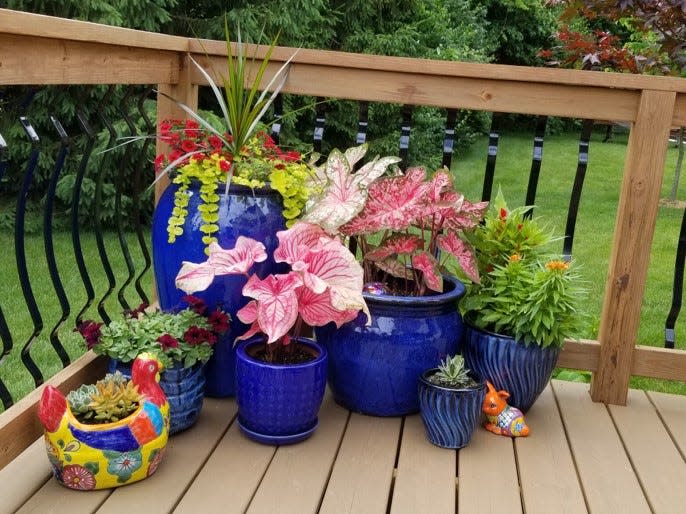Got a small space? What to know about container gardening | Gardener State
Container gardening is a great way to enjoy plants even if you only have a small space to grow them. Containers can be used to grow ornamental plants, herbs, and vegetables on just about any surface, including decks, patios, and even driveways.
Even though these plants will not be grown directly in the ground, it is still important to choose a location for your containers that receives enough sunlight and is protected from the wind. Choosing the right size container for the plants and the right potting mix are also things to consider. By following a few simple guidelines, you can grow almost anything in a container.
One of the first things to think about is which plants you would like to grow. Will you grow one tomato plant in a large container on your deck or will you grow a smaller pot of mixed annual flowers? If you are growing a mix of different plants together, they should have similar nutrient, water and sunlight requirements because they will all be sharing the same container. You can however vary things like color, shape, and height within an individual container. A tall grass or spike plant in the center of a container can be surrounded by trailing plants like petunia or sweet potato vine.

The container itself should be large enough to support the root system of the plants that are being grown in it and should be stable enough to support any large plants that may tip over when they are fully grown. If you are reusing an old container, it should be thoroughly cleaned and disinfected before planting anything new in it. This will help to reduce any potential insect or disease problems that could still be present on the old containers. The containers should be large enough to hold plenty of water for the plants, but also need to have adequate drainage holes in the bottom so that the roots do not get water-logged.
A soil-less potting mix is usually the best choice of material to fill the containers. These mixes are typically composed of peat or coconut coir as a base, with perlite and/or vermiculite to improve porosity and drainage. Commercial potting mixes have adequate nutrients and pH levels to get your plants off to a good start. You may need to provide additional fertilizer throughout the season, depending on the plants that you are growing and how rich your potting mix is. The containers should be filled almost all the way, leaving about 1 to 2” from the top of the pot.
Plants that are growing in a container will need to be watered more frequently than plants growing in the ground because their roots can only access the limited amount of water that is able to be held in the container. If the weather is hot, dry, and sunny, you may need to water your containers every day. In addition to the weather, how often you need to water will depend on the type of plants you are growing, the size of the container, and the type of potting mix that you are using. The best thing to do is to have your containers in a location where you can easily check on them every day and near your water source so that you can water them easily if needed.
If you are growing vegetables in your container garden, then it is important to locate them in an area that receives approximately 8 hours of sunlight per day. Also, look for dwarf varieties of vegetables to plant because their small size will be better suited to container production. Spacing guidelines should still be followed for each plant you are growing, meaning that a tomato, pepper, or eggplant will likely do best in their own individual container so they have enough room. Herbs, including basil, cilantro, parsley, and dill also work well in container gardens.
More: Tips to help your NJ lawn look its best | Gardener State
There are also many flowers that are well suited to container gardens. Zinnias, nasturtiums, verbenas, begonias are just some of the many options available. Creating different mixes of plants in your containers can be a fun and creative project. Visiting your local garden center is a great way to get ideas for your container garden because you can see many different flowering plants and think about which combinations will look best together before you bring them home.
Container gardens can add beauty and life to any outdoor area, no matter what the size. By choosing the right plants for your location and providing them with the proper care, you are sure to have success!
If you are interested in learning more about container gardening, Rutgers University has the following fact sheets available: Container Gardening with Vegetables, https://njaes.rutgers.edu/FS055/; Outdoor Container Gardening with Flowering and Foliage Plants https://njaes.rutgers.edu/fs1215/.
William Errickson is the Agriculture and Natural Resources Agent for Rutgers Cooperative Extension of Monmouth County.
This article originally appeared on MyCentralJersey.com: What to know about container gardening | Gardener State

